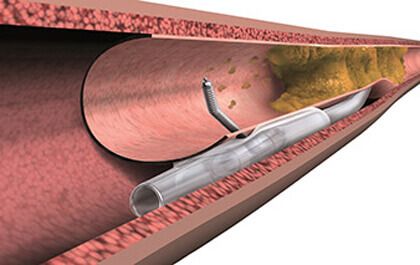In recent years, there has been an increase in the number of percutaneous coronary interventions (PCI) performed to treat chronic total occlusion (CTO). This increase is due to the availability of more advanced technology and greater experience of both operators and specialized centers. However, it is important to note that this technique is not free from complications, which tend to be slightly higher compared with other types of PCI. In some cases, the mortality rate can reach 1%.

In an analysis of the PROGRESS-CTO Registry, researchers included data from 12,928 patients. Of this group, 52 (0.4%) subjects died during the hospitalization period.
The patients who lost their lives were older, had a higher number of comorbidities, had undergone myocardial revascularization surgery (MRS), and had a lower ejection fraction.
Additionally, they obtained unfavorable results in the angiography, with a higher presence of calcification and tortuosity, and a higher score according to the CTO JAPAN Score. Retrograde recanalization was more frequently used in these cases.
The PROGRESS CTO Score for major adverse cardiovascular events (MACE), mortality, pericardiocentesis, and perforation was also higher in the patients who died.
Read also: Association Between Radial Wall Strain (RWS) and Risk of Acute Myocardial Infarction.
Procedure duration, fluoroscopy time, and radiation dose were higher in the patients who lost their lives, and so was the radiation dose they received.
The success rate of PCI was lower among patients who died (62% vs. 87%; P < 0.001).
Regarding the causes of cardiac-related mortality, in 43 patients, cardiac tamponade was the most frequent (30 cases), followed by acute myocardial infarction (9 cases) and cardiogenic shock (4 cases). Among the non-cardiac causes, there were 3 cases of stroke, 2 cases of renal failure, 2 cases of respiratory failure, and 2 cases of hemorrhagic shock.
Conclusion
In conclusion, approximately 0.4% of all patients undergoing PCI for chronic total occlusion die during hospitalization. Cardiac tamponade is identified as the main cause of death. The PROGRESS CTO Score for complications can be useful in assessing the risk in patients with chronic occlusion who will undergo PCI.

Dr. Carlos Fava.
Member of the Editorial Board of SOLACI.org.
Original Title: Periprocedural Mortality in Chronic Total Occlusion Percutaneous Coronary Intervention: Insights From the PROGRESS-CTO Registry.
Reference: Bahadir Simsek, et al. Circ Cardiovasc Interv. 2023;16:e012977. DOI: 10.1161/CIRCINTERVENTIONS.123.012977.
Subscribe to our weekly newsletter
Get the latest scientific articles on interventional cardiology





